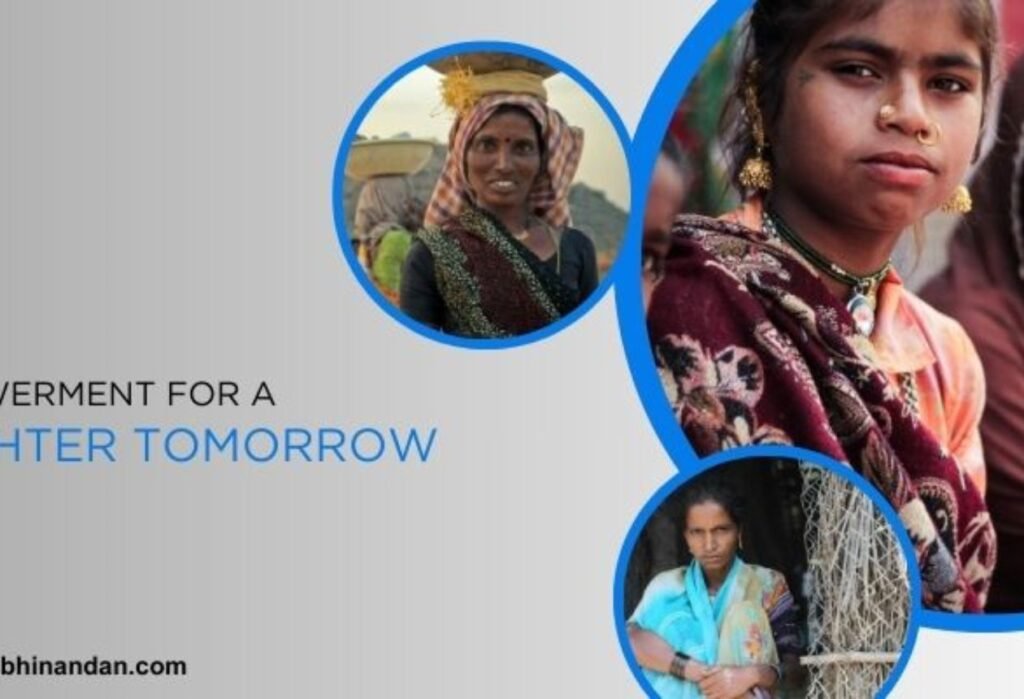
Empowering Women Through “My Abhinandan” – A Journey of Strength
India has made remarkable progress in empowering women, thanks to a combination of national policies, grassroots initiatives, and cultural shifts. One such initiative, “My Abhinandan”, is dedicated to the empowerment of women by promoting education, equality, and leadership. This blog explores how India’s Women’s Empowerment Policy, the growing focus on girls’ education, and the drive for empowering women contribute to a stronger and more equal society.
The Women’s Empowerment Policy in India: A Path to Equality
India’s Women’s Empowerment Policy plays a pivotal role in promoting gender equality. The policy focuses on improving women’s lives by addressing key areas such as healthcare, education, employment, and safety. It ensures that women gain access to equal opportunities and resources, which are essential for their progress in society.
The Women’s Empowerment Policy in India recognizes the challenges women face and provides targeted solutions, from improving access to education to creating legal safeguards against violence. Initiatives like these are in line with the vision of “My Abhinandan”, which focuses on uplifting women and encouraging their active participation in various spheres of life. Through such efforts, India is paving the way for a future where women enjoy the same opportunities and rights as men.
The Importance of Girls’ Education in Empowering Women
Education is one of the most powerful tools for empowering women. When girls receive a quality education, they gain the skills and knowledge to improve their lives, contribute to their communities, and become leaders in their own right. Girls’ education is particularly important because it directly impacts women’s economic prospects, health outcomes, and overall quality of life.
In India, the government has placed a strong emphasis on improving access to girls’ education, particularly in rural areas and underserved communities. Schemes like Beti Bachao and Beti Padhao aim to reduce dropout rates and encourage families to send girls to school. Educating girls is proven to result in healthier families, increased economic growth, and greater social progress.
Initiatives like “My Abhinandan” showcase the stories of women who have overcome obstacles to achieve their educational goals. These success stories inspire other girls to pursue their dreams and aim for higher education. “My Abhinandan” is not just about providing education—it is about creating a platform that encourages girls to believe in their potential and empowers them to break barriers in education and beyond.
Empowering Women Through Leadership and Community Engagement
Empowerment doesn’t stop with education; it also includes leadership and active participation in society. “My Abhinandan goes beyond education by offering opportunities for women to take on leadership roles in various sectors. Whether in business, politics, or social work, women’s voices are crucial in shaping the policies and decisions that affect their lives.
Community-driven programs, such as “My Abhinandan”, play a key role in nurturing leadership skills among women. By providing platforms for mentorship, networking, and skill-building, these initiatives empower women to become change-makers in their communities. Leadership training and opportunities are essential for women who want to inspire others and create lasting impact.
India’s Women’s Empowerment Policy encourages the participation of women in leadership roles and decision-making processes. Through the policy, India is fostering an environment where women can rise to leadership positions in both the public and private sectors. As more women assume leadership roles, they become role models, motivating others to follow suit and further empowering women across the nation.
The Path to a Gender-Equal Future
Despite significant progress, challenges still remain. The gender pay gap, unequal access to resources, and persistent gender-based violence continue to hinder full empowerment for women in India. However, with the Women’s Empowerment Policy in India, initiatives like “My Abhinandan” and the national focus on girls’ education, the country is moving in the right direction.
As we look to the future, it is critical to continue eliminating barriers to girls’ education, ensure the safety and well-being of women, and provide more opportunities for women to take leadership roles. By doing so, India can create a more inclusive, equal society where women are empowered to reach their full potential.
Conclusion
The journey of empowering women is ongoing, but initiatives like “My Abhinandan” are leading the charge by encouraging women to take charge of their lives and make a positive impact. Through education, leadership, and strong policies like the Women’s Empowerment Policy in India, we can build a future where empowering women becomes the norm, not the exception. Together, we can work toward a future where every woman has access to education, equal rights, and the opportunity to lead.



